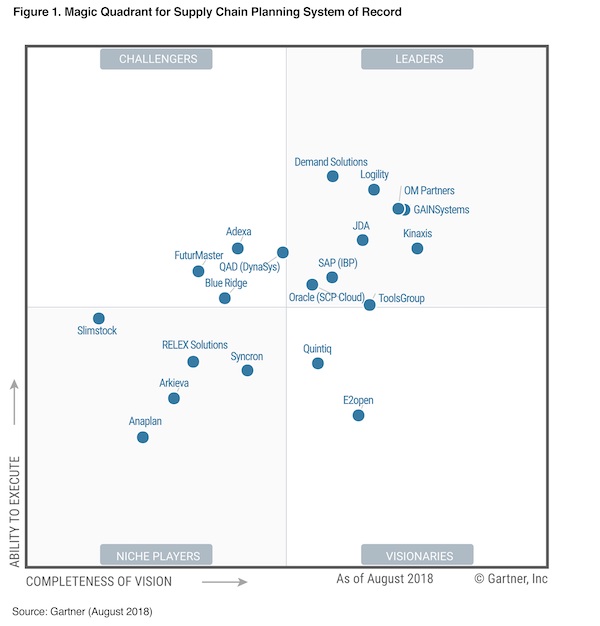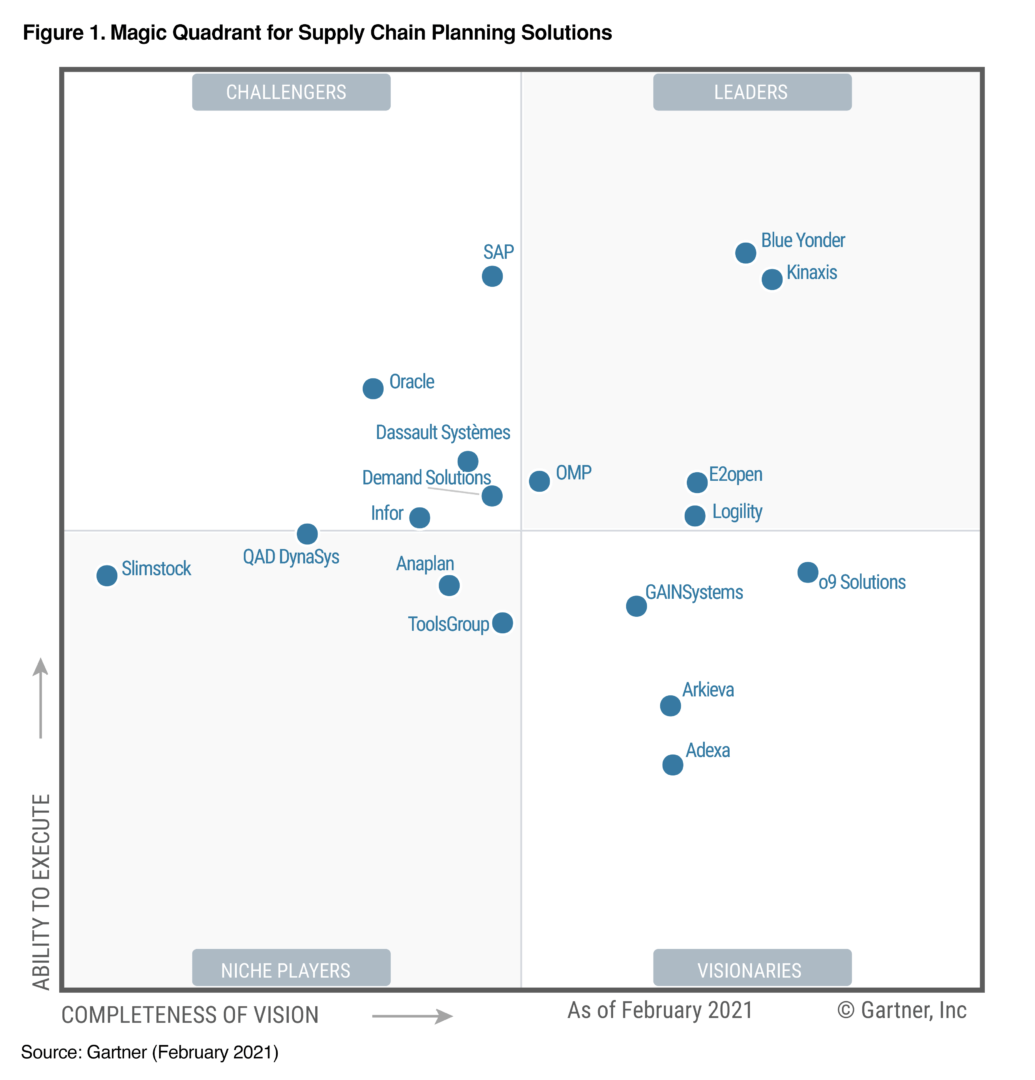Why is There Near Radio Silence by Vendors Criticizing Gartner?
Executive Summary
- Most of the software vendors in an area lose from the Gartner Magic Quadrant, yet few say anything against Gartner.
- This article sets up the reality of the MQ and addresses the question of why vendors stay silent.

Introduction
The IT analyst space has a major problem. While there are several major IT analysts, for software selection a single company, Gartner is dominant. Gartner has created a monopoly through more than 60 acquisitions and forces vendors to use them as shortlists are based very heavily on the Gartner MQ. This is the case even though the MQs are not auditable and are strongly rigged towards the largest vendors. Vendors constantly reach out to Brightwork and complain that they have no choice but to participate and fund Gartner.
Vendors support this corrupt model because they feel they have to “play the game” and see no way out, as one vendor wrote about Gartner.
The opacity of Gartner is a big methodological problem. As long as the meta-ranking recipe is public, it’s fine. Consultants should be able to re-process the data of a given report according to a recipe of their own (assuming they are willing to re-enter manually the data).
This gets into a critical question around why the criticism of Gartner is so limited.
Our References for This Article
If you want to see our references for this article and other Brightwork related articles, see this link.
Notice of Lack of Financial Bias: You are reading one of the only independent sources on Gartner. If you look at the information software vendors or consulting firms provide about Gartner, it is exclusively about using Gartner to help them sell software or consulting services. None of these sources care that Gartner is a faux research entity that makes up its findings and has massive financial conflicts. The IT industry is generally petrified of Gartner and only publishes complementary information about them. The article below is very different.
- First, it is published by a research entity, not an unreliable software vendor or consulting firm that has no idea what research is.
- Second, no one paid for this article to be written, and it is not pretending to inform you while being rigged to sell you software or consulting services as a vendor or consulting firm that shares their ranking in some Gartner report. Unlike nearly every other article you will find from Google on this topic, it has had no input from any company's marketing or sales department.
The Problem Keeping the Status Quo
Vendors should consider the negative implications of constantly having to function in a market where Gartner controls who is shortlisted. Vendors know that the MQs do little to help customers select the right application for their needs and that buyers are continually guided to inappropriate applications. They also know how easy it is for unscrupulous vendors to trick Gartner, having Gartner esteem trendy or hot topic technologies that are irrelevant or of little relevance to the task at hand in each software category.
This forces vendors to follow these pathways of development that area dead-end or of marginal benefit, not because of any evidence that they are necessary or beneficial and therefore a good use for development effort, but because the marketing department of the least scrupulous vendor was able to convince Gartner that it was true.
Observing the Change in Vendor MQ Rankings Over Time
There is often a great emphasis on the latest Gartner MQ. However, there is very little focus on the MQs of previous years or comparing how a specific MQ changes over time. Every time I perform comparison across years of a different MQ, it leads to very interesting results.
Let us begin by reviewing the 2018 MQ for Supply Chain Planning and then move forward in time to the 2021 MQ.
The 2018 MQ for Supply Chain Planning

A few things come across in this MQ. One is how few vendors there are in the MQ. A major method problem with Gartner’s MQs is that they do not reflect vendors’ fields in any category. In fact, they don’t even reflect all of the vendors from the previous years in most cases.
Why is this?
Well, Gartner must be able to use some stick against vendors to keep them paying Gartner. And a primary stick is to exclude non-paying vendors from the MQ. This is great for Gartner’s revenues but very bad for buyers, who Gartner tells to select from among vendors that are willing to pay Gartner’s toll.
However, getting in the MQ is not the goal of vendors. Vendors need the Leader designation or at least a high Visionary or Challenger ranking. This is because the MQ is frequently used to shortlist vendors for selection. Gartner will often keep disaffected vendors in the game by promoting the idea that they can do better next year’s MQ. Particularly if they invest more in “analyst services.” Gartner needs to keep doing this, or the more low-ranked vendors will drop out, and Gartner needs that revenue to meet its revenue targets, which are quite aggressive.
How Gartner Deals With Non-Leader MQ Assigned Vendors
Gartner will always have disaffected vendors, but they need to keep them around and keep them paying and have enough vendors to have not just a few vendors in any one MQ. This type of continual future selling is a common feature that Gartner uses. And Gartner uses it to impressive effect on both software buyers and vendors. It is a sales strategy they use, which is constantly overpromising what Gartner can do for vendors. This is covered in the article How IT Analyst Firms like Gartner and Forrester Overpomise Marketing Exposure to Vendors.
Before we get to a comparison, it is important to note that there is no reason for a buyer to restrict their search to even the 18 or so vendors in the MQ, much less just those in the Leader quadrant.
Here is why.
In just the forecasting category (which has fewer vendors than the overall SCP category), I estimate over 50 (let us say 55) vendors that would qualify as providing sufficient forecasting functionality levels. Why are there only 18/55 vendors or 32% of the potential vendors included in this MQ?
Gartner must retain the ability to punish vendors with exclusion from the MQ to keep the money train from vendors continually coming. The only reason that SAP has such a truncated list is that Gartner is showing its clients those vendors that could meet Gartner’s price.
What does this have to do with what is the right software for the software buyer to purchase?
Nothing is the answer. These two things have nothing to do with each other.
This is why claims that Gartner is not “pay to play” are odd. First, why are so many vendors missing from every category? And second, why do vendors disappear from MQs from year to year? There are many questions that all have the same answer. Gartner is profit-maximizing its MQs.
Now let us move to the 2021 MQ because we can learn some exciting things by comparing the MQ across years.
The 2021 MQ for Supply Chain Planning

Keeping the changes from 2018 and 2021 is greatly enhanced through the following table.
Gartner SCP MQ Comparison 2018 vs 2021
| Number | Vendor | Quadrant Ranking 2018 | Quadrant Ranking 2021 | Change Quadrant Or Out or In MQ from 2018 to 2021? |
|---|---|---|---|---|
| 1 | Blue Yonder | Leader | Leader | 0 |
| 2 | Kinaxis | Leader | Leader | 0 |
| 3 | E2Open | Visionary | Leader | 1 |
| 4 | Logility | Leader | Leader | 0 |
| 5 | OMP | Leader | Leader | 0 |
| 6 | SAP | Leader | Challenger | 1 |
| 7 | Oracle | Leader | Challenger | 1 |
| 8 | Dassault Systemes | Challenger | 1 | |
| 9 | Demand Solutions | Leader | Challenger | 1 |
| 10 | Infor | Challenger | 1 | |
| 11 | GAINSystems | Leader | Visionary | 1 |
| 12 | 09 Solutions | Visionary | 1 | |
| 13 | Arkieva | Niche Player | Visionary | 1 |
| 14 | Adexa | Challenger | Visionary | 1 |
| 15 | Anaplan | Challenger | Niche Player | 1 |
| 16 | ToolsGroup | Leader | Niche Player | 1 |
| 17 | QAD DynaSys | Challenger | Niche Player | 1 |
| 18 | Slimstock | Niche Player | Niche Player | 0 |
| 19 | Blue Ridge | Challenger | 1 | |
| 20 | Relex Solutions | Niche Player | 1 | |
| 21 | Synchron | Challenger | 1 | |
| 22 | Quintiq | Visionary | 1 | |
| 23 | FuturMaster | Challenger | 1 |
For the last column, if there was a change with the vendor from the 2018 to 2021 MQ, this is designated with a “1.” “0” indicates no change.
Let us review the issues one by one.
Issue #1: Why Are Vendors Repeatedly Coming and Leaving the MQ?
Towards the middle of the table, you can see the vendors that appeared in the MQ in 2021 but weren’t there in the 2018 MQ. A vendor like o9 is valid as not being in 2018, as o9 was still getting started in 2018. However, Dassault Systemes was an established supply chain planning vendor in 2018.
Towards the bottom of the table, you can see vendors that appeared in the 2018 MQ but disappeared in the 2021 MQ. I checked to see if these vendors were consumed in an acquisition, particularly by any other vendors on this list, but I could not find any report of any of them being acquired. So they are still operating, but now Gartner is saying — in effect — they are not worthy of consideration.
Notice that none of them were ranked in the Leader quadrant in 2018.
I conclude that vendors that do not score very high in the MQ receive marginal benefit from being in the MQ.
- They often don’t get short-listed but still have to pay Gartner’s very high fees.
- It seems very likely that these vendors concluded paying Gartner that amount of money was not worth it, and they then dropped out.
- When they told Gartner this, Gartner would have put their persuasive salespeople on them and tried to sell them on how well they could do in next year’s MQ, but the vendors were not convinced.
There is never any explanation from Gartner about why vendors come in or leave the MQ in each MQ. Gartner never mentions why a vendor comes in or leaves any MQ. Gartner’s desire is for software buyers not to think in historical terms and only look and be concerned with the most recent year’s MQ.
Why is There Virtual Radio Silence on Criticism of Gartner?
What is curious is that vendors who are not part of the MQs and have no plans to be are still quiet in Gartner’s criticism. Recently, a well-known analyst came out in Gartner’s support, even though I believe that their private opinion of Gartner is very different from their public opinion.
How is Gartner able to maintain near radio silence on criticism, except on comments on LinkedIn or in private conversations where vendors FREQUENTLY share their critiques of Gartner — as long as they are never personally quoted? When you talk to vendors that deal with Gartner, they virtually universally dislike Gartner, and nor do they respect them. The comments I hear frequently call into question the knowledge of the Gartner analysts. In fact, even vendors that do very well in an MQ will still talk about how rigged the process is.
My analysis is that vendors fear Gartner, and Gartner can retaliate against them. However, this only explains why vendors that are in the MQ are silent. It does not explain why vendors who never plan to participate in an MQ and know the MQs are invalid also stay silent. Only a tiny percentage of vendors in any category benefit from the MQ.
One commenter on LinkedIn provides one answer.
It’s simple, all other vendors still hope that one day stars align themselves and Gartner’s grace will shine upon them. So they don’t want to allienate Gartner right now.
That is the only thing that would explain it. It means that Gartner can co-opt the tail (non-participating vendors) for “someday” rather than calling out the current system’s reality.
The Fundamental Conservatism and Risk Aversion with Most Software Vendors
I have observed that most vendors very much think “inside of the box.” They approach their marketing and sales by using the traditional approaches, which means ingratiating themselves to companies like Gartner or Forrester or creating partnerships with major consulting firms. This is done even though partnering with a major consulting firm will mean increasing the costs of implementation and duration and reducing the overall value to the software vendor’s customer. I recently was asked what I thought about one vendor creating partnerships with some major consulting firms. I responded with the following comment.
Well, how do you feel about making a deal with the devil?
After having dealt with many marketing departments at many software vendors, I have avoided controversy like the plague.
The consequence of this conservatism is that there is little reform in enterprise software. I never realized this before interacting with marketing professionals, but they are generally quite conservative, and should I also say, conformist. For example, companies like AWS and Google Cloud arrived on the scene promising to improve efficiency greatly. However, within a few years, they began forming partnerships with major IT consulting firms, which greatly increase the inefficiency and TCO of software.
Conclusion
Gartner is successful in co-opt nearly all software vendors, both those that pay them to do well in their magic quadrants as well as those that perform poorly in their magic quadrants and those software vendors that are not in the Magic Quadrant but hope one day to be presented in a Magic Quadrant.
By staying silent on what they know about Gartner, they keep from burning their bridges. In this last part, I did not come up with myself. I credit a commenter on LinkedIn. However, it is the most persuasive argument I have heard for why virtually all vendors stay silent on what they know about Gartner.